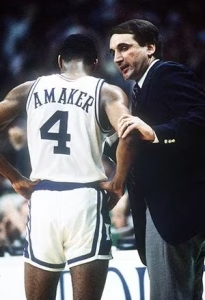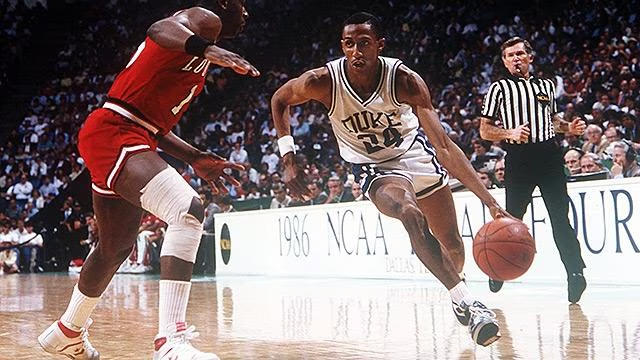💔 Thirty-Eight Wins, One Missed Shot, and a Dynasty That Never Truly Began?
The 1986 Duke Team That Could Have Been the Greatest Ever — But Instead Became the Blueprint for Heartbreak That Still Haunts a Program Built on Almost. What If 1986 Was the Year Duke Won It All?
DURHAM, N.C. — It was supposed to be the season that changed everything. The one that catapulted Duke Basketball from respected contender to untouchable dynasty. In 1986, Mike Krzyzewski had finally assembled the kind of team every coach dreams of — hardened seniors, rising stars, and a hunger born from years of falling just short. They didn’t just win — they dominated, notching a school-record 37 victories and entering the NCAA Tournament as the nation’s top-ranked team.
But instead of eternal glory, that season became something else entirely — a myth, a lesson, and a scar.

The Team That Had It All
With All-Americans Johnny Dawkins, Jay Bilas, Mark Alarie, and David Henderson — alongside junior point guard Tommy Amaker — Duke’s starting five was as balanced as it was battle-tested. Add freshman phenom Danny Ferry and future NBA veteran Billy King off the bench, and the Blue Devils had depth that could rival anyone.
They swept through the regular season, claimed the ACC regular season and tournament titles, and defeated 11 ranked opponents along the way. They even took down a loaded Kansas team in the Final Four — their 21st consecutive win — to earn a shot at history.
This was Coach K’s sixth year, but it felt like his arrival. The Final Four was his rite of passage. But what came next was the beginning of Duke’s most haunting “what if?”
Louisville 72, Duke 69: A Game — and a Legacy — Lost
April 1986. Dallas, Texas. The National Championship.
Duke entered halftime with a narrow lead, but Louisville freshman Pervis Ellison — who would be named the tournament’s Most Outstanding Player — erupted in the second half. The Blue Devils, who had shot over 52% all season, suddenly went cold. The final moments slipped through their fingers. A missed shot here. A tip-in by Ellison there. And just like that, a 38-win dream ended at 37-3.
Coach K later admitted, “That team was worthy of winning it all. I wish I was older then — I think I could have done more.”
It wasn’t just the loss. It was the meaning behind it. It was the cruel reality that the greatest season in school history might now only be remembered for what it almost became.
A Blueprint for Glory — or a Warning?
Duke wouldn’t win it all in 1986. But they would use the pain. Over the next nine years, Coach K’s teams went to seven Final Fours and captured two national titles in 1991 and 1992.
But ask the players of ‘86 — Dawkins, Bilas, Amaker — and they’ll tell you: nothing ever quite matched that run. “It still cuts us today,” Amaker said decades later. “We were that good. We just didn’t finish.”
For Dawkins, who dropped 24 points in the title game, the heartbreak lingered: “I’ve never rewatched that game. I don’t think I ever will.”
And for Bilas, the wound was mathematical and mythical: “We win that game, we go 38-2 — maybe the greatest team ever. But we lost, and that conversation disappeared.”
The Legacy of Pain — and Foundation of Power
Thirty years later, Coach K called the 1986 team “the rock of our program.” That one shot — that one game — changed the expectations forever.
They didn’t win, but they redefined what could be done. They showed that Duke wasn’t just a school with a good basketball team — it was becoming a basketball institution.
But the question remains: What if 1986 had gone differently? What if Duke had hoisted that trophy?
Would they have become a dynasty even sooner? Or did the sting of loss forge the steel needed to build what came next?
We’ll never know.
But sometimes, heartbreak doesn’t break a program — it builds one.
And that’s the tragedy — and triumph — of the 1986 Duke Blue Devils.





























